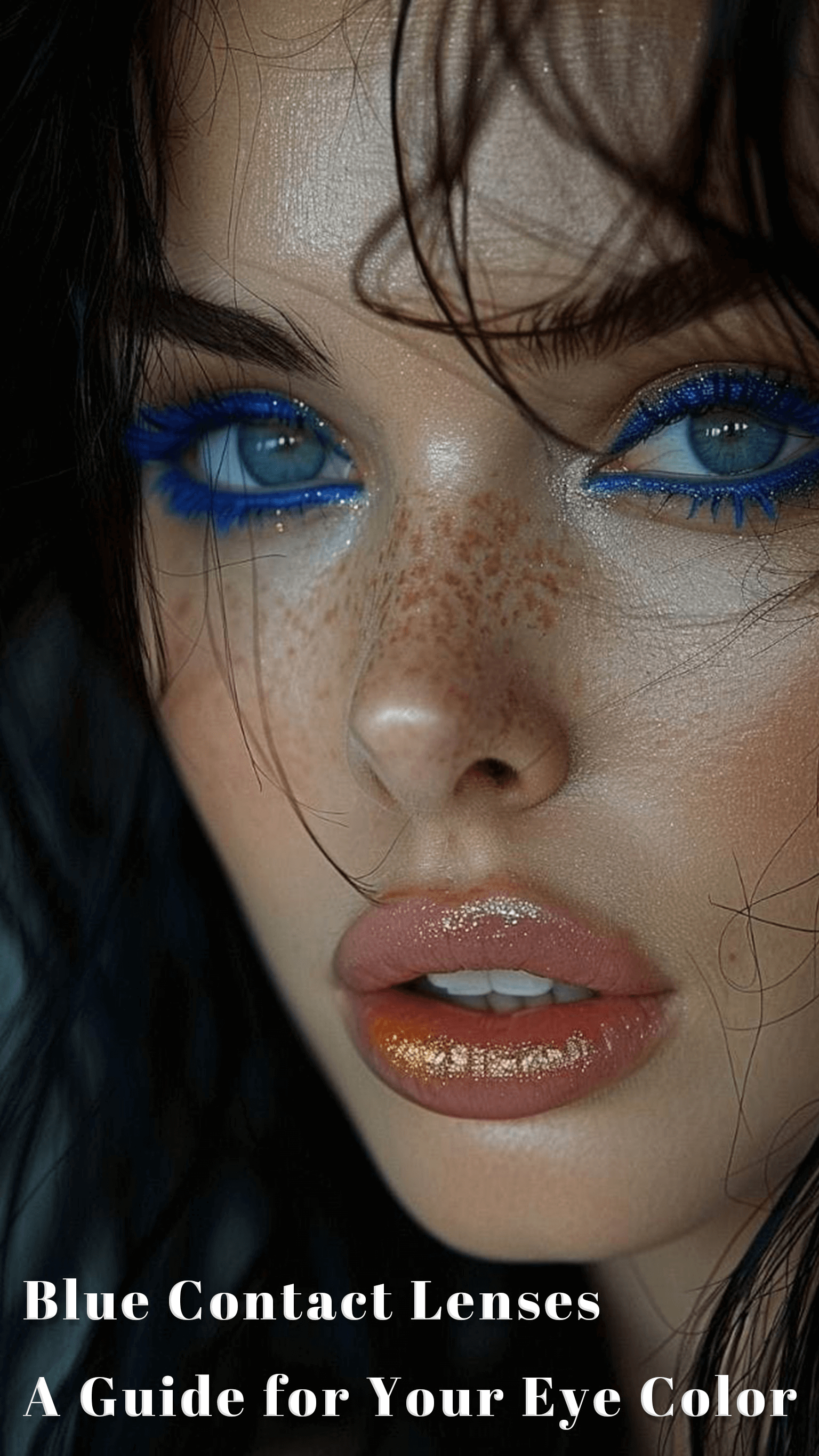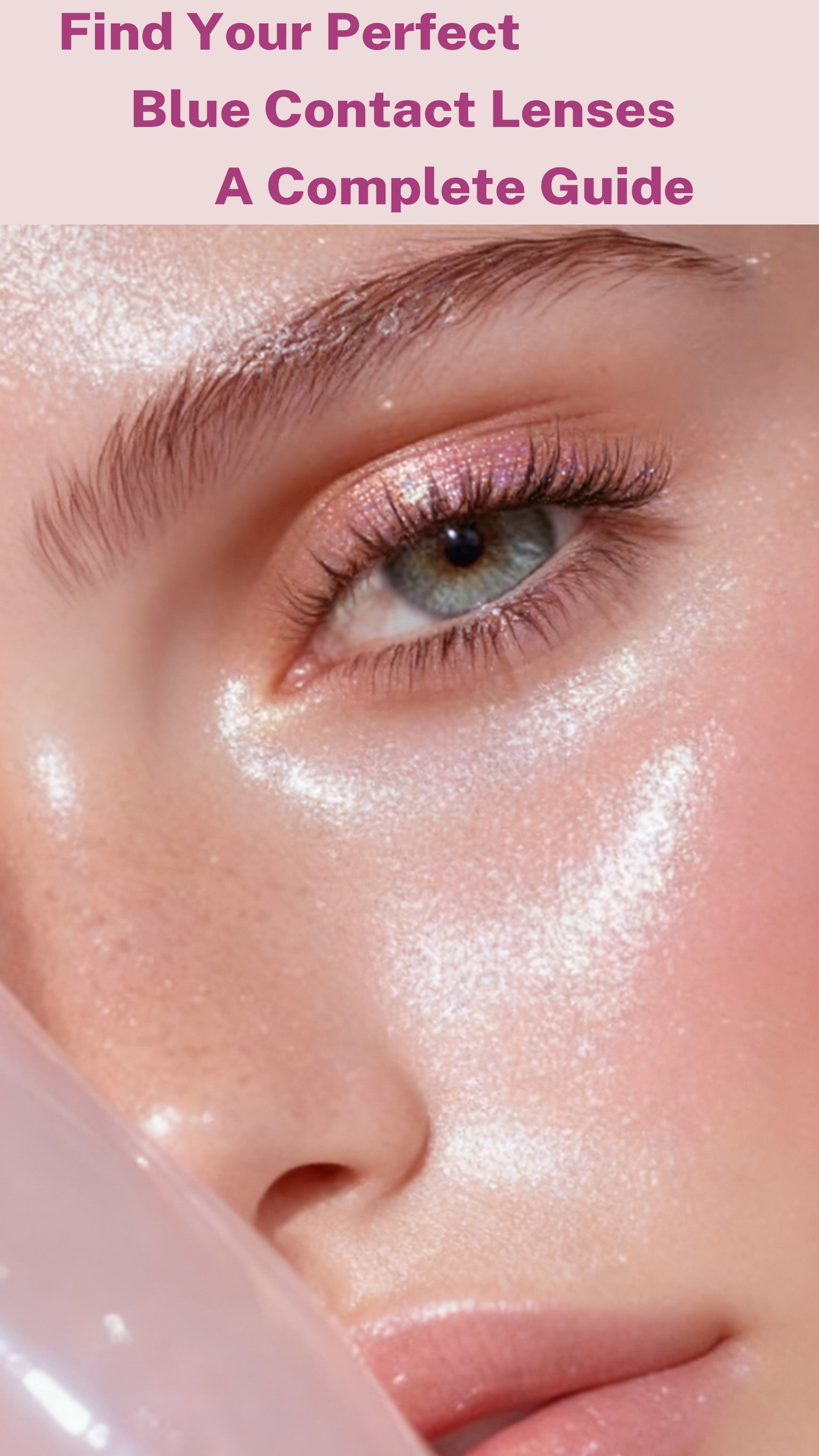When choosing colored contact lenses, certain parameters directly affect wearing comfort and the effect. This article will provide a brief analysis of key indicators, including diameter, water content, and base curve, to help you quickly identify the most suitable style and avoid purchasing misunderstandings.
DIA - Diameter
- DIA - Lens Diameter: refers to the total diameter of the lens, including the transparent edge.
- G.DIA - Graphic Diameter / Design Diameter: refers specifically to the diameter of the colored pattern. This is a key parameter that affects the "magnification" effect of the eyes. The larger the tinting diameter, the larger the eyes appear.
| Iris size (mm) | Recommended lens DIA | Wearing style | illustrate |
| 11.8mm ~ 12.0mm | 13.8mm ~ 14.0mm | Extremely natural naked eye feeling | Fits your own iris, no lens marks, suitable for light-colored eyes + no makeup |
| 12.0mm ~ 12.2mm | 14.0mm ~ 14.2mm | Daily Enhancement | Slightly enlarge the eyes, soften the edges, and slightly blend or enhance the three-dimensional effect |
| ≥12.3mm | 14.2mm ~ 14.5mm | Mixed personality / Makeup matching | Obvious contrast, suitable for dark eyes or makeup enhancement, slightly exaggerated but not abrupt |
Professional advice: Choose lenses that are 1~1.5mm larger than the actual diameter of the iris. This will naturally enlarge the eyes while avoiding an overly exaggerated "doll eyes” effect, creating just the right amount of charming eyes.

BC - Base Curve
- Refers to the radius of curvature of the inner surface of the lens, usually in millimeters (mm). It determines the fit of the lens to the eyeball.
- A base curve that is too large may cause the lens to become loose, slip, or even fall off; a base curve that is too small may cause the lens to be too tight, press on the eyeball, and cause discomfort or hypoxia. It is essential to choose a lens that closely matches the base curve of your eyeball.
Professional advice: When choosing the base curve (BC) of colored contact lenses, it is recommended to consult with a professional optometrist for guidance. It is recommended that the base curve of the lens be 0.1-0.3mm larger than the corneal curvature. For the first try, it is recommended to start with 8.6mm for trial wear and adjustment.
PWR / D - Power / Diopter
- Also known as diopter, this indicates the lens’s ability to correct vision. It is usually negative (-) for nearsightedness and positive (+) for farsightedness.
- Colored contact lenses are also available with no power (plano, PLano or 0.00D).
Professional advice: To ensure the accuracy of vision correction and wearing comfort, it is recommended to choose contact lenses with the correct degree based on the optometry report or the professional prescription of an ophthalmologist. Since contact lenses fit directly on the eyeball, it is not recommended to choose based on the degree of the frame of glasses.

WC - Water Content
- Refers to the percentage of water in the lens.
- Low Water Content: Usually refers to a water content of less than or equal to 40%. The lens is less likely to evaporate water, theoretically more moisturizing, and suitable for people with dry eyes.
- Medium Water Content: Usually refers to a water content of 40%-60%.
- High Water Content: Usually refers to a water content greater than 60%. The lens may have good oxygen permeability, but it has strong water absorption. If the eyes are dry, it may absorb water from the eyeball, causing the eyes to become drier.
| Water content range | type | features |
| <40% | Low water content lenses | The material is stable and suitable for long-term wear |
| 40%-60% | Medium aqueous lenses | Balancing comfort and breathability |
| >60% | High moisture lens | Initially soft but easily dehydrated by tears |
Professional advice: The water content of contact lenses should be adjusted flexibly according to personal eye conditions and the frequency of use. Dry and sensitive eyes are best suited for lenses with lower water content, as this can help reduce water loss. For short-term wear, consider models with slightly higher water content to improve comfort. For long-term use, prioritize moisturizing stability. For outdoor activities or dry environments, lenses with water-locking technology are ideal.
CT - Center Thickness
- Refers to the thickness of the center of the lens, usually measured in millimeters (mm).
- Thinner lenses theoretically have better oxygen permeability, but may be more susceptible to breakage or difficult to wear.
| Center thickness | advantage | Potential impact |
| 0.06 mm ↓ | Lighter and more breathable | Easy to dry, easy to deform, difficult to wear and take off |
| 0.07 ~ 0.09 mm | Stable and good forming | Standard choice, balanced overall performance |
| 0.10 mm ↑ | Higher degree of molding | Slightly heavy, may feel slightly thick (not suitable for super sensitive eyes) |
Professional advice: When choosing colored contact lenses, it is recommended to prioritize lenses with a center thickness of between 0.07 mm and 0.09 mm. Within this range, the lenses are stable and easy to wear. They are neither too thick to cause a foreign body sensation nor too thin to be difficult to wear or easy to curl. They are suitable for daily use by most people. Moderate thickness can also take into account comfort and oxygen permeability, making them an ideal choice for novice color lens wearers and daily makeup users.

Material
- Common ones are hydrogel and silicone hydrogel.
- Silicone hydrogel material is usually more oxygen permeable than hydrogel, allowing more oxygen to reach the cornea. It is particularly suitable for people who wear it for more than 8 hours a day and is commonly seen in short-term products, such as daily or weekly disposables. Traditional hydrogel materials are renowned for their exceptional flexibility and skin-friendly feel, making them particularly suitable for creating long-term lenses, such as those with six-month or yearly disposability. However, it is worth noting that the daily wearing time should not be too long.
Professional advice: Hydrogel lenses are soft and hydrophilic, making them suitable for individuals with sensitive eyes or those new to contact lenses. However, they have low oxygen permeability and are recommended for short-term use. Silicone hydrogel lenses have high oxygen permeability and are suitable for long-term wear or for people with dry eyes. The material is slightly harder but more durable. Select the most suitable material based on your daily needs and eye condition to ensure both comfort and eye health.
Dk/t - Oxygen Permeability / Transmissibility
- Measures the amount of oxygen that can pass through a lens. Dk is the oxygen permeability of the material, and t is the thickness of the lens. The higher the Dk/t value, the better the oxygen permeability of the lens and the better for eye health.
Professional advice: Oxygen permeability is a key indicator of contact lens safety, primarily determined by the material (such as silicone hydrogel) and the manufacturing process. It is recommended to prioritise coloured contact lenses with high oxygen permeability to ensure corneal health, while also considering beauty and comfort.
Validity Period
- Refers to the longest time the lens can be used after opening.
- Common ones are: daily, monthly, quarterly, half-yearly, and annual.
Professional advice: When choosing a contact lens cycle, you need to weigh your needs: annual disposable lenses have outstanding cost-effectiveness and are suitable for users who can adhere to daily cleaning and care; daily disposable lenses are more hygienic as they can be discarded immediately and are ideal for those who pursue convenience or have sensitive physiques, but the long-term use cost is higher.

After understanding the key parameters of colored contact lenses, it is essential to select a lens that is both comfortable and aesthetically pleasing while also ensuring its safety. Wooeye colored contact lenses are designed for this purpose. They utilize the industry-leading sandwich coloring process, which sandwiches the color layer between two layers of lens material, effectively preventing the dye from directly contacting the eyeball and making it safer. All Wooeye lenses are made of hydrophilic HEMA material, with a standard center thickness (about 0.07mm) and a fitted 8.6mm base curve design. They are not only light and natural to wear but also can maintain moisture for a long time without drying. At the same time, Wooeye offers a rich color range, ranging from natural to mixed-blood styles, with a myopia coverage of up to -8.00, truly taking into account beauty, comfort, and functionality. Whether you are a novice or a color lens enthusiast, Wooeye is worthy of your trust.










